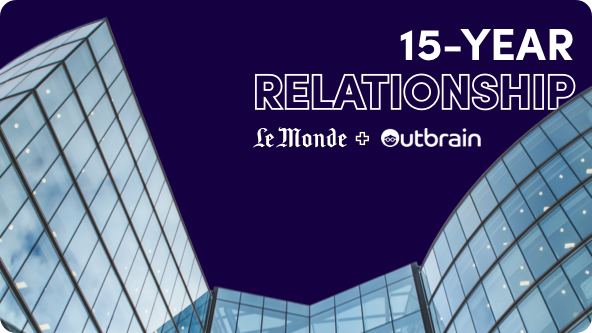[Event Recap] ID5’s Diversity in Digital Advertising — How Can We Continue Progressing?

The #BlackLivesMatter movement has shined a bright light on systemic and institutional racism around the world — even further, unveiling the issues surrounding unconscious biases, instilled in every last one of us.
And personally, for a Black man like myself, it’s provided a platform to discover everything happening around me, and my own voice to challenge the status quo. And that very voice was what brought on the amazing opportunity to participate in a Diversity & Inclusion panel with ID5.
To help paint the picture of this opportunity for you: I was scrolling through LinkedIn and came upon an amazing roundup of Webinars posted by Mathieu Roche, the CEO and Co-Founder of ID5. Within that roundup included some of the greatest names in ad-tech — truly admirable, insightful speakers. Though taking a step back, it became clear that the speaker list lacked diversity, with not one person of color included.
Consciously, did anyone involved realize? Likely not. But that’s just it — it’s our unconscious where these decisions tend to lie. So, backed with a newfound confidence thanks to the #BLM movement, I stood tall on my platform (not before having legitimate heart palpitations, wondering if I’d be committing career suicide), and replied to Roche, mentioning the absence of diversity within.
Those palpitations soon subsided when it resulted in direct contact from Roche himself, accepting that he did not make that catch, and feeling it as an oversight on his part. Even better, it led to this very Webinar alongside Roche at ID5 and Osita Osadebe, Programmatic Specialist at Thomson Reuters, to discuss all-things Diversity in Digital Advertising.
While there was much to take away (and you can watch for yourself at the bottom of the article!), here are the top five questions I found myself walking away asking — with tips on how we could all become better allies, cultivating a more opportunistic and equal industry for all.
- Digital Advertising has a minority representation issue, but at what level does it exist?
- Are we doing enough as an industry to foster Diversity & Inclusion?
- Are there any initiatives that are making an impact?
- What can companies do to solve the underrepresentation of minorities and build more diverse organizations?
- What can each of us do to drive change within our organizations and within the industry?
Let’s dive in!
1. Digital Advertising has a minority representation issue, but at what level does it exist?
In the UK specifically, according to research by the British Interactive Media Association, if we look around to Entry to Middle-Management positions, the representation of people of color is actually favorable compared to national demographics. Statistics show that 16% to 17% of people representing ethnic minorities fit within this level, compared to 13% in the UK’s national statistics.
But it’s at Senior Leadership positions where those opportunities are overwhelmingly lacking diversity, with ethnic minorities making up only 4% of positions.
This is the crux of the issue — and a good starting place to unravel the deeper biases that occur unconsciously as much direction and influence does come from the top.
2. Are we doing enough as an industry to foster Diversity & Inclusion?
Put simply — no, we aren’t. And that goes beyond the four walls of the ad-tech industry.
That same British Interactive Media Association, or BIMA, report found that 9% of white people within the industry say that they have experienced discrimination that has negatively impacted their career. That number is heavily skewed towards women, naturally. More concerning, that the number increases to 40% when applied to people of Afro-Caribbean heritage. That is a huge lift.
Physical impairments? 12%. Mental health condition? 22%. Ages 55-64? 34%. Women? 35%. This signifies a lot more work needs to be done with all inclusion and education so that everyone — from all walks of life — can see a future for themselves within ad-tech.
3. Are there any initiatives that are making an impact?
There are many! Though one in particular that I’d like to call out, given how inspiring it’s been to see big companies come together in support of it: Brixton Finishing School in London, which gives inner-city children an opportunity to attend courses in Digital Advertising with companies such as Magnite, Google, GroupM, and more. Even further, off the back of it, an opportunity to land job positions at each without having attended university.
I am significantly proud to have taken part in this program before and it proved to be an incredibly fruitful experience for them, and myself as well.
4. What can companies do to solve the underrepresentation of minorities and build more diverse organizations?
The opportunities are limitless, though here are a few solutions:
- Educate year-round — not just during Black History Month, or Pride, or Mental Health Awareness week. Make education the foundation of diversity.
- Review employee data for your own company, and see if it’s in line with industry standard and the population at large. Discover how much work you’ve done, and how much more work there is still left to do.
- Train your teams to deal with issues relating to feeling excluded — allow it to be discussed in an open and honest way, without fear of reprisal.
- Further, train your Managers thoroughly given they are on the frontlines — giving them the ability to be open-door leaders, supporting any topic or circumstance, from anxiety and depression to racial discrimination.
- Deeply understand that it’s beneficial for the company, even from a revenue perspective, as companies with superior records of ethnic and racial diversity make 35% more revenue than average.
5. What can each of us do to drive change within our organizations and within the industry?
Overall, be the voice to call out clear discrimination when you see it. And further, individually be willing to understand that this isn’t a case of “What about me?”.
It’s saying, “Look at the data.” It’s saying, “That by the virtue of my ethnicity, I’m significantly less likely to make it to the top and that isn’t right.” It’s saying, “We can do better.”
If we’re willing to engage in that conversation in a productive way, we’re on the right track to true equality — no matter what race, gender, sexuality, or anything, really.
And that’s a wrap! Sincerely, thank you to Mathieu Roche and the ID5 team for providing a forum for this very discussion. Candidly, it’s not the most comfortable topic, but that in and of itself represents progress — and I, for one, am very appreciative.
Also, a huge thank you to Osita Osadebe (Ozzie!), who raised a few fantastic points throughout the webinar — and whom I will be relying on going forward as I continue working to understand what I myself can do to help foster more diversity for people of color within Digital Advertising.
Now, go on and spread the good word within your own organizations.














